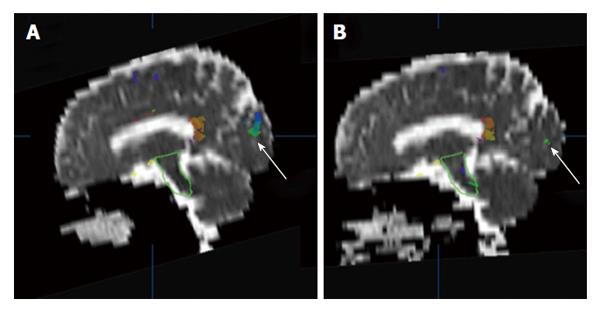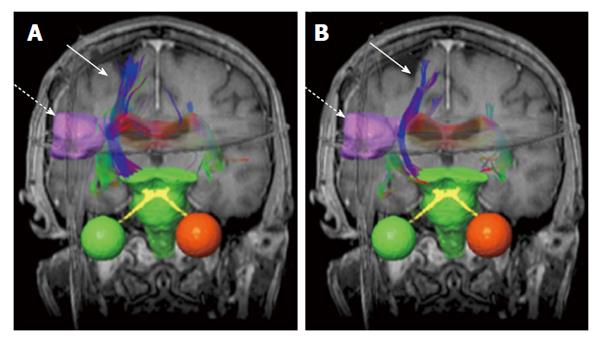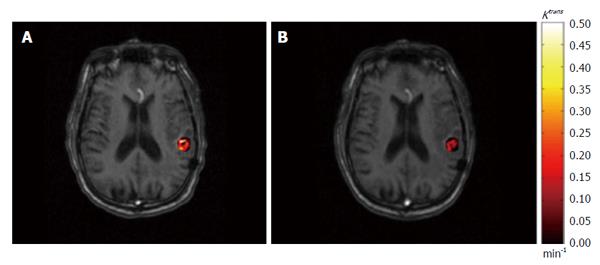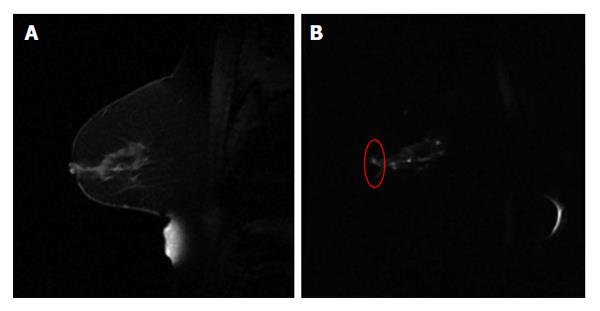Copyright
©The Author(s) 2015.
Figure 1 An example of brain apparent diffusion coefficient maps calculated from diffusion weighted images (b = 500 mm2/s) in a sagittal plane before (A) and after (B) radiotherapy.
The white arrows indicate a comparison of superimposed colored maps of neural fiber bundles derived from diffusion tensor imaging data (b = 500 mm2/s).
Figure 2 An example of brain neural fiber bundles (solid arrows) derived from diffusion tensor imaging data (b = 500 mm2/s).
The pre-treatment (A) and post-treatment (B) results are superimposed on coronal T1-weighted magnetic resonance images. The dashed arrows indicate gross tumor volume (pink boundary).
Figure 3 An example of permeability rate constant Ktrans map derived from dynamic contrast-enhanced imaging.
The pre-treatment (A) and post-treatment (B) Ktrans results within gross tumor volume are superimposed on axial T1-weighted magnetic resonance images.
Figure 4 An example of sagittal breast T1w image (A) and the diffusion weighted image (b = 500 mm2/s) using echo planar imaging sequence (B).
The red circle in (B) highlights the distorted breast boundary.
- Citation: Chang Z, Wang C. Treatment assessment of radiotherapy using MR functional quantitative imaging. World J Radiol 2015; 7(1): 1-6
- URL: https://www.wjgnet.com/1949-8470/full/v7/i1/1.htm
- DOI: https://dx.doi.org/10.4329/wjr.v7.i1.1
















